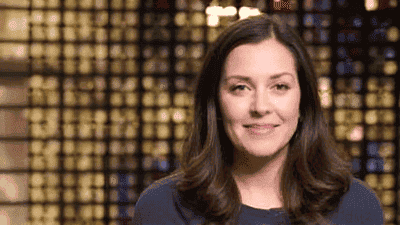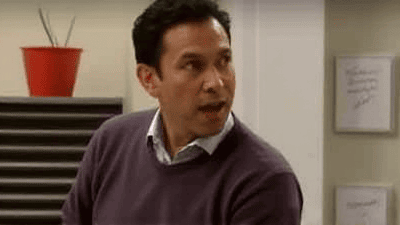
Beyond the Screen: Navigating the Orchestrated Chaos of Hit TV Show Production
The creation of a successful television series, often perceived by viewers as a seamless blend of captivating storytelling and stellar performances, is in reality an intricate tapestry woven from countless hours of meticulous planning, technical expertise, and collaborative effort. This theme delves into the complex mechanisms operating behind the curtain, revealing the hidden processes that transform a nascent idea into a global phenomenon. It explores the journey from initial concept to final broadcast, a path fraught with creative challenges and logistical triumphs.
The profound cultural and economic impact of television makes understanding its production pipeline crucial for aspiring filmmakers, media executives, and even avid viewers. Hit shows influence societal discourse, drive entertainment trends, and represent massive investments, employing thousands across diverse disciplines from writing and directing to visual effects and marketing. Current industry developments, such as the rise of streaming platforms and the demand for high-quality content, amplify the importance of comprehending these fundamental processes. Without a full grasp of the painstaking coordination and innovative problem-solving inherent in TV production, how would our understanding or practice of media creation be affected, potentially hindering future storytelling and technological advancement?
Laying the Groundwork

From Script to Greenlight: The Foundation of Storytelling
The journey of any hit television show begins long before cameras roll, in the critical phase known as pre-production. This foundational stage involves transforming a raw idea into a comprehensive blueprint for filming. It commences with concept development, where initial ideas are fleshed out into compelling narratives, often evolving from a logline (a one-sentence summary) into a detailed treatment (a prose summary of the story, characters, and tone). Following this, a pilot script is penned, serving as the proof-of-concept for the series. If the pilot script receives approval from network or studio executives – a "greenlight" – a team of writers then crafts subsequent episode scripts, meticulously outlining dialogue, scene actions, and plot progression. Simultaneously, casting directors embark on finding the perfect actors to embody the characters, a process involving auditions, chemistry reads, and extensive talent searches. Location scouts identify suitable filming sites, considering aesthetic, logistical, and budgetary constraints. Production designers begin to visualize and plan sets, props, and costumes, ensuring every visual element aligns with the show's artistic vision. This meticulous planning ensures efficiency and cohesion once principal photography begins, acting as the bedrock for the entire creative endeavor.
Capturing the Magic
Orchestrating the Chaos: Roles, Rhythms, and Resource Allocation
Once pre-production blueprints are finalized, the intricate ballet of principal photography commences, transforming scripts into visual sequences on set. This phase, often perceived as chaotic from an outsider's perspective, is in fact a highly choreographed operation driven by a complex hierarchy of roles and meticulous scheduling. The director guides performances and visual storytelling, translating the script into cinematic language. Working alongside the director is the cinematographer (or Director of Photography, DP), who oversees camera and lighting crews, defining the show's visual aesthetic. The first assistant director (1st AD) is the logistical linchpin, managing the shooting schedule, coordinating cast and crew movements, and ensuring that daily production goals are met efficiently. Every moment on set is a race against time and budget.
Consider a typical drama series production. A single hour-long episode might require 7-10 days of shooting, involving dozens of crew members, elaborate sets, and expensive equipment rentals. Resource allocation becomes paramount, dictating not only what can be filmed but also how it is achieved within financial parameters. Below is a simplified breakdown of typical daily costs for a mid-range television series production, excluding major star salaries and large-scale special effects, illustrating the financial weight of each minute of captured footage. This data underscores why efficiency and precise coordination are critical, as even minor delays can escalate costs significantly. | Category | Average Daily Cost (USD) | Contribution to Production | |-----------------------|--------------------------|--------------------------| | Crew Salaries (approx. 50 people) | $30,000 - $60,000 | Technical & Creative Labor | | Equipment Rental | $10,000 - $25,000 | Cameras, Lighting, Sound | | Location Fees | $5,000 - $15,000 | Filming Sites | | Catering & Craft Services | $2,000 - $5,000 | Cast & Crew Sustenance | | Production Design | $3,000 - $8,000 | Sets, Props, Wardrobe | | Transport & Logistics | $1,000 - $3,000 | Moving People & Gear | | Total Daily Estimate | $51,000 - $116,000 | Overall Operations |
These figures highlight that every day of principal photography is a substantial investment, driving the need for constant vigilance over budget and schedule. Effective communication among department heads – from the sound mixer ensuring pristine audio to the gaffer overseeing lighting – is crucial for resolving on-the-spot challenges and maintaining the flow, making "orchestrated chaos" a fitting description for this dynamic phase.
Polishing the Vision

Shaping the Narrative: Editing, Effects, and Sound Design
Once all scenes are shot, the raw footage enters post-production, a transformative phase where the show truly comes to life. This is where the narrative is meticulously shaped, imperfections are polished, and immersive sensory experiences are crafted. Editing is the cornerstone, where editors, guided by the director's vision, assemble raw clips into a coherent story, determining pacing, rhythm, and emotional impact. They choose the best takes, cut unnecessary dialogue, and create seamless transitions, often spending weeks or months on this intricate puzzle. Simultaneously, visual effects (VFX) artists begin their work, adding elements that were impossible or too expensive to film practically. This can range from subtle background enhancements to creating entire fantastical worlds, leveraging sophisticated software and CGI (Computer-Generated Imagery) to render lifelike dragons or futuristic cityscapes. Concurrently, sound design professionals meticulously craft the auditory landscape. This includes mixing dialogue to ensure clarity, adding foley effects (everyday sounds like footsteps or rustling clothes), composing musical scores, and creating ambient soundscapes that deepen immersion. Each element is layered and balanced to build tension, evoke emotion, or reinforce the narrative. The final audio mix ensures that dialogue, music, and effects coexist harmoniously, delivering a high-quality sonic experience. This phase is where disparate elements converge into a cohesive, polished artistic statement. (Sound mix)
Conclusion
The journey from a nascent idea to a globally acclaimed television series is a testament to extraordinary human ingenuity, collaboration, and relentless dedication, far surpassing the simplistic view from the viewer's couch. This article has peeled back the curtain, revealing the complex, multi-stage process encompassing meticulous pre-production planning, the dynamic orchestration of principal photography, and the transformative artistry of post-production. We have explored how conceptualization evolves into detailed scripts, how diverse crews unite on set to capture raw footage, and how editors, VFX artists, and sound designers meticulously shape these elements into a compelling narrative. Understanding these intricate layers underscores the profound value of television production as both an art form and a technological marvel, positioning it as a pivotal force within the broader entertainment and media landscape.
Looking ahead, the television industry faces exhilarating prospects driven by rapid technological advancements and evolving viewer habits. The advent of AI-driven script analysis, virtual production techniques leveraging real-time rendering, and immersive storytelling experiences like interactive narratives are poised to redefine how shows are conceived and consumed. Challenges persist, including the immense pressure for original, high-quality content, sustainability in production practices, and navigating an increasingly fragmented global audience. Future breakthroughs will likely emerge from interdisciplinary integration, merging cinematic craft with gaming technology, data analytics, and behavioral psychology. Continued research into audience engagement, ethical AI implementation in creative processes, and innovative distribution models remains paramount. The ongoing evolution of television demands continuous exploration and adaptation, ensuring its enduring power to entertain, inform, and shape our collective imagination.
Frequently Asked Questions (FAQ)

Q: How does a TV show budget get allocated, and why do some shows seem much more expensive than others? A: A television show's budget allocation is a highly complex and strategic process, essentially a financial roadmap guiding every aspect of production. It's not just a single lump sum, but rather a detailed breakdown across various departments and phases: pre-production, principal photography, and post-production. Typically, major line items include cast salaries (often the largest single expense for star-driven shows), crew wages (which can account for a significant portion, especially for large crews over many weeks), equipment rentals (cameras, lighting, sound gear), location fees, set construction and art department materials, visual effects (VFX), music licensing and composition, sound design, catering, transportation, and marketing.
The perceived cost difference between shows stems from several factors. High-concept genre shows, like fantasy epics or sci-fi thrillers, often require extensive VFX work, elaborate sets, exotic locations, and larger ensembles, driving up costs. A show with numerous action sequences or period-specific costumes will inherently be more expensive than a contemporary drama filmed mostly on a few standing sets. Star power also plays a huge role; A-list actors command multi-million dollar salaries per episode. For instance, a show like "The Mandalorian" relies heavily on cutting-edge virtual production technology and intricate creature designs, necessitating a budget far exceeding a typical sitcom. Conversely, a talk show or a reality series filmed in limited locations with non-union talent will have a comparatively modest budget. Essentially, the more ambitious the storytelling, the larger the scale of visual and practical effects, and the more famous the talent, the higher the budget climbs. Think of it like building a house: a custom mansion with bespoke features and a prime location will always cost more than a standard suburban home, even if both provide shelter.
Q: What are the main differences between producing a network television show and a streaming service original series? A: While both network and streaming original series aim to entertain audiences, their production paradigms, creative freedoms, and underlying business models present significant differences. Traditionally, network television (e.g., ABC, CBS, NBC) operates on a broadcast schedule, meaning episodes are typically released weekly. This schedule dictates a rigorous, often unforgiving production timeline to ensure episodes are ready for their airdate. Budgets can be tighter due to advertising-based revenue models, and content often needs to appeal to a broad, general audience to maximize viewership for advertisers, leading to more conservative creative choices and stricter broadcast standards regarding language, violence, and nudity. The traditional pilot season model, where numerous pilot episodes are made with only a few picked up to series, adds another layer of pressure and cost.
Streaming service originals (e.g., Netflix, HBO Max, Amazon Prime Video), on the other hand, often benefit from different financial backing and creative parameters. They typically release entire seasons at once (binge-model) or with less rigid weekly schedules, which can allow for longer, more flexible production timelines. This flexibility can translate to higher production values and more ambitious storytelling. Streaming platforms generally have a global reach and cater to niche audiences, allowing for greater creative freedom, darker themes, more explicit content, and less concern for mass appeal. Their subscription-based revenue model means they prioritize subscriber acquisition and retention through unique, high-quality content, often leading to significantly larger budgets per episode compared to network counterparts. For example, a streaming show might greenlight a series directly without a pilot, investing heavily based on concept and talent alone, a riskier but potentially more rewarding strategy in a highly competitive market.








